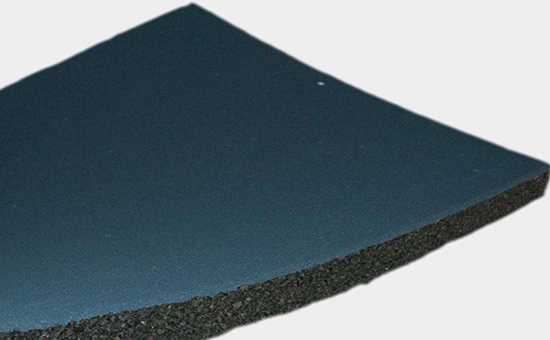
Waste tires Recycled rubber production of rubber tiles is the use of crushed in small pieces of scrap tires, made of elastic layer, the support layer and then added to the elastic layer on top of it with a three-tier laminated structure of the brick, by ensuring good The durability, robustness and resilience of bricks made from scrap tire fragments for construction workers and pedestrians, and methods of making the same. The technology produces products that are stable, maintain a certain sense of weight, are flexible, durable, robust, and have a variety of uses.
Tire Recycled Rubber Powder The production of the brick by the production of the brick by a rubber brick has the following three-layer structure consisting of 100 parts by weight of rubber particles, 3 to 10 parts by weight of a binder and 0.5 to 5 parts by weight of an upper elastic layer of a pigment; 5 to 20 parts by weight of a rubber sheet and 10 to 15 parts by weight of a binder; and an integrated lower elastic biaxially formed under the support layer under the same conditions as the upper elastic layer 3-layer structure. Rubber Block Process: A lower elastic layer material is put in a mold, and 100 parts by mass of rubber particles pulverized in a particle size of 1 to 3 mm are mixed with 3 to 10 parts by weight of a polyurethane as a binder A binder, and 0.5 to 5 parts by weight of a colorant pigment; and forming an intermediate support layer material on an upper portion of the lower elastic layer material, the intermediate support layer material being a mixture of 100 parts by weight of a finely divided material of 1-3 mm, 20 parts by weight of a rubber sheet having a particle diameter of 2 to 3 mm, and 10 to 15 parts by weight of a urethane-based adhesive; and laminating the upper elastic living material under the same conditions as those for producing the lower elastic layer material, Minute plus sulfur curing process. The scrap rubber particles make up the upper elastic layer, the middle support layer and the lower elastic layer. Experts Wu Rongguang, Wu Rongzhao said that as the upper and lower layers of the main material used rubber scrap is cut, crushed in particles l ~ 3mm size. When blended in the middle support layer, it needs to correspond to the shape of the fine skeleton material (mainly silica) of the main material of the support layer, and the waste rubber fragments cut in 2 ~ 3mm particles are selected.
The urethane-based adhesive serves to mix and bond the rubber particles of the upper and lower elastic layers and the colorant pigment with each other, and is used in an amount of 3 to 10 parts by weight with respect to 100 parts by weight of the rubber particles. If less than this amount, the rubber particles can not be fully bonded, easy to produce peeling; adhesive dosage is too large, but will reduce the elasticity, but also will not get the effect of increasing the adhesive capacity. In addition, in order to make the color more beautiful, the pigments used generally have the choice of colored pigments of rubber or synthetic resin. You can eliminate the need to use pigments if you have used single-color rubber particles with pigments. At this time, relative to 100 parts by weight of rubber particles, the amount of pigment is 0.5 to 5 parts by weight, if less than the amount of coloring is not sufficient, the color of the brick is not beautiful; excessive dosage may bring to the physical and chemical properties of brick village Adverse effect
The main function of the middle support layer is to provide the brick village with the proper weight and maintain its shape and sturdiness. In addition to fine-grained materials used in addition to silica, the general can also use cement, concrete and so on. To ensure its proper weight, 5 to 20 parts by weight of rubber particles are blended with respect to 100 parts by weight of the fine framework material. The ideal support layer and the elastic layer thickness ratio of 2: 1.
The brick 10 of the present technology comprises a three-layer structure of the upper and lower elastic layers 11 and 12 and the middle support layer 13. The elastic layers 11 and 12 are made by uniformly mixing a rubber-based adhesive and any pigment. The support layer 13 is formed by the fine-framework material Z1 in which the rubber particles 22 are uniformly dispersed by the adhesive to form a close-coupled structure. The outer periphery of the middle support layer 13 may also be entirely covered with a bullet layer so that the support layer 13 is formed inside.
Waste rubber tires from the production of recycled rubber tiles in order to change the environmental conditions have a good durability performance. It also has the advantage of good stability and elasticity due to the inclusion of a suitable fine framework material. In addition, through the effective utilization of discarded tires, it also plays an important role in contributing to the effective reuse of resources and environmental protection.
Exclusive original article [commercial authorization] reprint, excerpt and excerpt in any form are prohibited without written authorization. Focus on Hongyun rubber: learn the process formula and raw material technology of producing rubber products from recycled rubber to help you reduce costs and increase profits